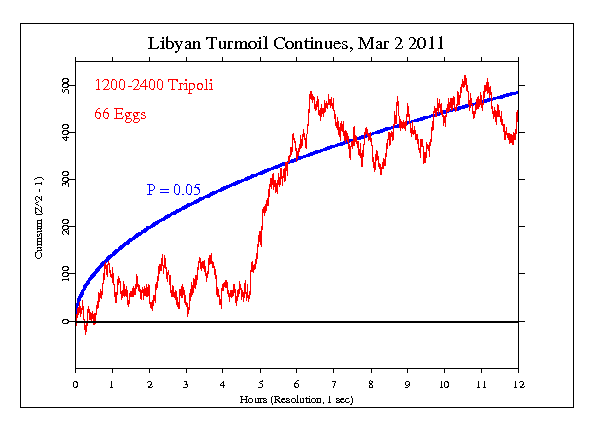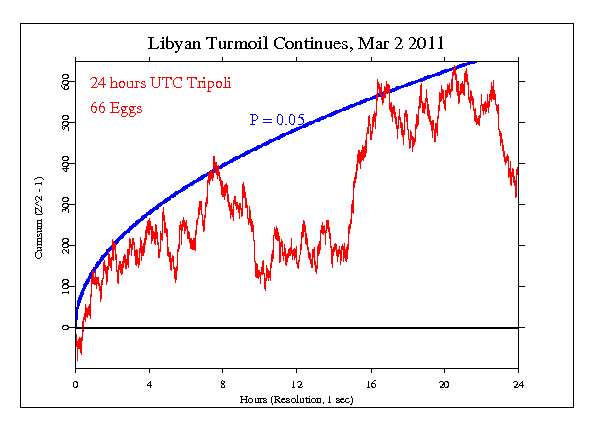|
The ongoing battles in Libya continue, with no resolution in
sight. It is a situation of interest around the world, and
the attacks and counterattacks on the 2nd of March seemed to
be an appropriate sample of the turmoil. We therefore set
a formal event that might cover most of the major battles on
that day. (Notes extracted from Globe and Mail reporting.)
The 2nd was also marked by an apparent humanitarian gesture
by Gadhafi forces, who delivered food and water to the
refugees blocked at the Tunisian border. They also had
reclaimed the eastern cities of Brega and
Ajdabiya, pushing ever closer to the rebel capital of
Benghazi.
However, by the end of the day, fortunes in the east
had turned again as the revolutionaries and pro-Gadhafi
forces fought a day-long battle with heavy artillery and
assault rifles, ending with the opposition forces -- a
mix of defecting Libyan officers and armed activists --
claiming control of the town. But government air strikes
continued into the night, and there were widespread reports
of heavily armed government troops on the move.
The most serious loss for the opposition occurred out of
sight of the world's media in the highly populated west
of Libya. There, Gadhafi forces moved the highly armed
Khweldi tank and infantry brigade to the town of Sorman and
placed an even larger brigade to the immediate west of
Tripoli, surrounding the opposition-held city of Zawiyah,
according to independent monitors and Libyans living in the
cities.
I was not able to find any times associated with the major
clashes.
The GCP event was set for 12 noon to midnight local Tripoli
time on the 2nd of
March. The result is 43638.506 on 43200 df, for p = 0.068
and Z = 1.489.

An informal exploration looking at the full UTC day (which covers 2
AM Wednesday to 2 AM Thursday local time) shows pretty much
the same picture, with a number of periods of strong,
persistent deviation, interspersed with relatively flat
periods.

It is important to keep in mind that we have only a tiny
statistical
effect, so that it is always hard to distinguish signal from
noise. This means that every "success" might be largely
driven by chance, and every "null" might include a real
signal overwhelmed by noise. In the long run, a real effect
can
be identified only by patiently accumulating replications of
similar analyses.
|